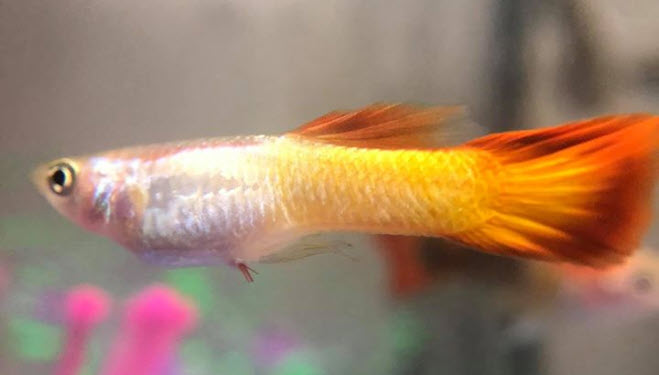
Camallanus nematode worms are among the most commonly encountered internal parasites for aquarium fish and may infect a wide range of fish species. They are seen as red threads hanging out of the anus of the fish. Camallanus is often found in necropsies of cichlids which have shown such symptoms as bloat, white poop and not eating. It thus imitates hexamita. Capillaria can also cause hollow belly, arched back, wasting, spitting out food and intestines popping out
Camallanus worms can ONLY be effectively treated by adding fenbendazole or levamisole mixed into the food and ONLY mixed into food. That way you paralyze the worms inside the fish. Medication in the water only paralyzes the worms hanging out of the fish. Medication in the water does nothing to the worms inside the fish. This is why people say the camallanus keeps coming back after treatment.
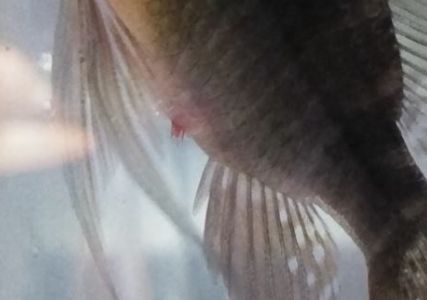
Camallanus in Depth
Camallanus is a genus of parasitic roundworms (nematodes). The Camallanus cotti species is unique in that it is the only Camallanus worm that doesn’t require an intermediate host. These worms reproduce by producing live offspring since the females incubate the eggs while they are in their bodies to produce the larvae. These larvae are passed out in the feces where they are ingested by other fish.
Camallanus cotti is typically reddish brown. But there are pictures of white nematodes hanging out of the anus of tropical fish. What nematode species these worms are is not clear.
There is a “myth” that fish get camallanus by eating bloodworms. Bloodworms are the larvae of an insect, a midge, and categorically do not have any parasites or eggs of camallanus in them. Nor do tubifex worms spread camallanus. Live cultures of bloodworms or tubifex worms can have pests like leeches among them. So it is not recommended to use live bloodworms or tubifex worms.
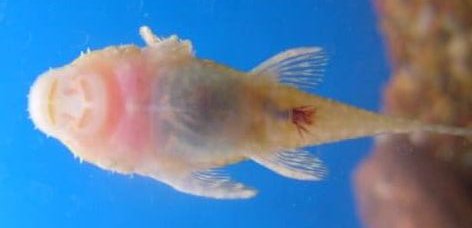
What has to be emphasized is that scientists are constantly finding new di-genetic and tri-genetic nematodes which have different intermediate hosts. So the blackworms or tubifex worms MIGHT POSSIBLY have some species of nematode in them which can infect fish in turn. By the same token, there MIGHT POSSIBLY be some species of nematode worm which can use aquarium snails or shrimp as intermediate hosts. But there are no such species found in the literature.
Light infections of camallanus worms are difficult to detect. Serious infections can be indicated by the presence of red, thread-like worms emerging from the anus of the aquarium fish. These are the females releasing their larvae into the water. If a fish is swollen but eats well, suspect camallanus. Long-standing chronic camallanus can give a hollow belly appearance because the intestines become compromised and can’t absorb food.
Well-maintained fish may be infected without exhibiting any symptoms at all, and camallanus worms are commonly found among wild fish without any obvious link between infection and mortality. But negative environmental pressures such as high bacteria count in the water will reduce the immune response of infected aquarium fish, making it easier for the worms to multiply and cause damage to their host fish.
Livebearers seem to exhibit higher mortality due to camallanus and a tank of only livebearers can be wiped out by camallanus.
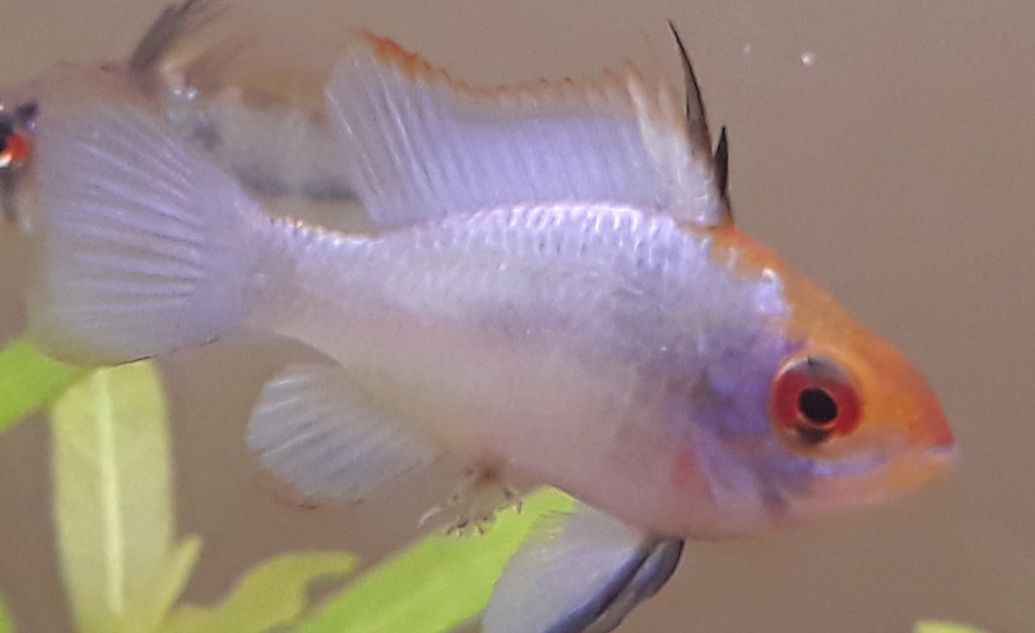
Treating Camallanus
One must treat camallanus by adding a dewormer to the food. It is a myth that adding medication to the water of the aquarium will cure camallanus. This myth is propagated by medication manufacturers who recognize that their profit will be much greater if one adds large amounts of medication to the water in the aquarium.
Fenbendazole (Thomas Labs Fish Bendazole, Panacur and Safeguard for dogs, and several livestock dewormers) is the most effective medication. It is the medication of choice for camallanus by public aquariums (Hadfield, 2011). Public aquariums use Fenbendazole ONLY in the food. They do not put it in the water.
Levamisole is also an effective medication if mixed into the food. Fritz Expel-P is levamisole. Levamisole can also be purchased at Amazon, subaquaria .com, and Valleyvet .com. Some eBay sellers supposedly sell bogus products, look for cattle products such as Agrilabs Prohibit Soluble Drench Powder and DURVET Levamed Soluble Drench Powder Dewormer.
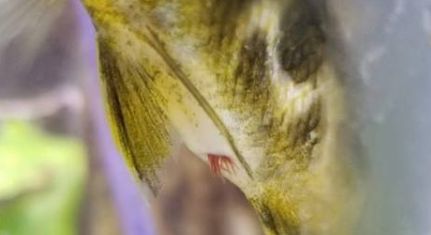
Other medications supposedly effective against roundworms are Pyrantel Pamoate, Flubendazole (Kusuri Wormer Plus), Ivermectin, and Piperazine. In some countries, this is all that is available to aquarium hobbyists. All are mixed into the food at roughly a 1 to 5% level. This is just a tiny amount of medication, like the size of barley grain, mixed into two tablespoons of food.
Most medications do not kill the worms, they only paralyze the barbed jaws that the roundworms hold onto the gut. So, the detached but live worms get pushed out of the gut and into the aquarium (which the aquarist will see when the pink or red worms emerge and detach from the anus). Within 24 hours of medicating the substrate should be thoroughly cleaned to remove the worms.
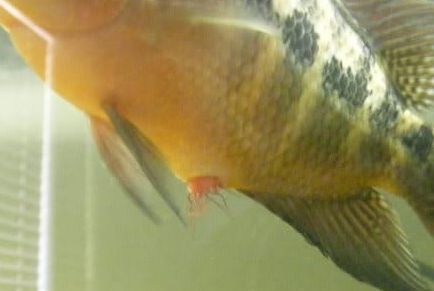
The best situation is to transfer the fish to a bare-bottom hospital tank. That way the worms which are paralyzed can be easily seen and vacuumed up. If the fish eat the adults the adult is killed but there can be live larvae inside the adults which can reinfect the fish.
The life cycle of camallanus is relatively long. The larvae can exist outside a fish for three weeks and the worms take three to four weeks to mature once inside the fish. Feed fish with Fenbendazole in the food once every week for at least three months.
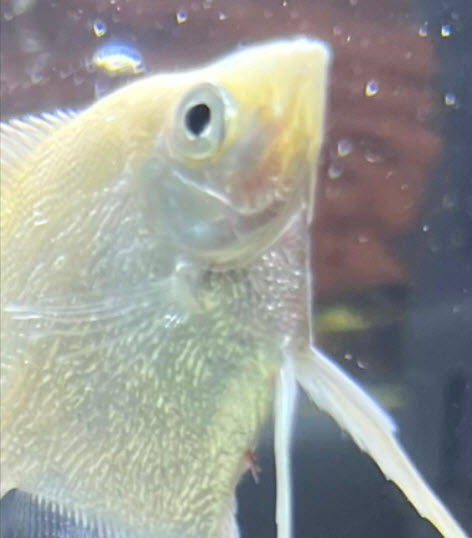
All the medications treat only relatively narrow classes of organisms. This is opposed to things such as disinfectants which kill any living cell they can penetrate. This make these medications very safe. All are also approved by the FDA internally in humans. While not a 100% guarantee, this would indicate they are probably safe in fish.
Note that the cautions about deaths of snails, shrimp and invertebrates is very dose dependent. Fenbendazole are often used with no snail deaths because the dosage isn’t high enough. Conversely using a very high dosage of fenbendazole can possibly kill shrimp. And Levamisole is safe for everything except nematodes and snails. Praziquantel is safe with everything except planaria and flukes.
It is easy to make medicated food. Heat 1/4 cup of water (two ounces or 58 milliliters, not a lot) in the microwave. Then blend seven grams of plain animal derived gelatin (Knox gelatin, one packet) into the hot solution with vigorous stirring. Take two tablespoons of dry commercial fish food (pellets or flake) and mix it with just a little of the hot water/ gelatin mixture. Add hot water/gelatin until you get a paste-like consistency. If it gets too watery just add more food. To get gel food to float simply mix in a little whipped cream at this point.
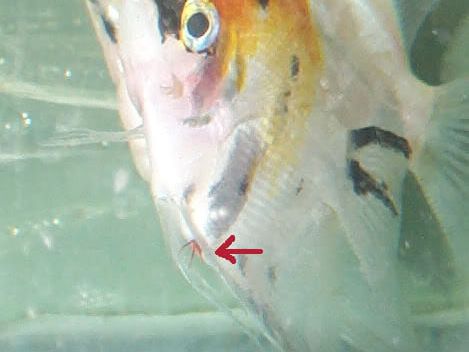
Then add roughly 1/16 teaspoon (a 1% to 2% addition, the size of a barley grain) of the medication to the mud. Mix and mash the whole mass thoroughly. Spread it out into a pancake about 1/8th inch (3 mm) thick on a plastic film or a plate. Then put it in the refrigerator. If you plan on keeping it for more than two weeks put it in a small plastic bag and freeze.
Note while the fish won’t eat it like they normally do, they typically will eat some if you just leave it in the tank. Also, note that API General Cure and Praziquantel do not work against camallanus.
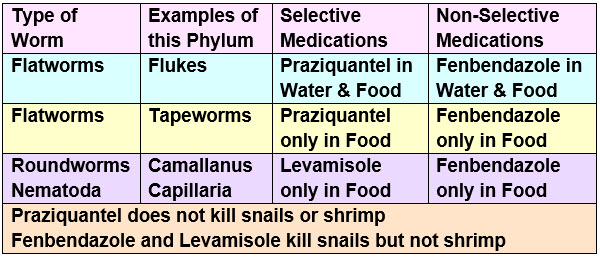
Mode of Medication Application
Many people say only levamisole is effective against camallanus. They are incorrect. Fenbendazole is not soluble in water so it does nothing when added to the water, including not making the camallanus worms sticking out of a sick fish’s anus release their hold. Levamisole is soluble in water so it does make the worms sticking out the anus release their hold when it is put in the water of the aquarium. So many well-intentioned commentators on social media vehemently claim only levamisole works.
Some authors have said that Levamisole works great when added to the water. They say that Levamisole is absorbed through the skin and the gills. This is simply not true. The Levamisole molecules are far too large to be absorbed through either the skin or the gills. It just is impossible.
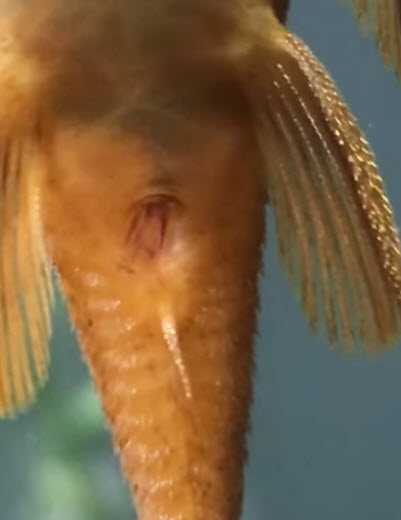
The origins of this thinking are quite simple. Camallanus worms stick their bodies outside the anuses of the fish to release their larvae. So levamisole in the water column is easily absorbed by the worms sticking out the anus directly from the water. The worms become paralyzed and fall out of the anuses. So the fish then APPEAR cured.
But ONLY the worms sticking into the water were paralyzed. The worms remaining in the fish were not paralyzed. Whether or not the infection “re-occurs” (actually whether or not the worms still in the fish stick their bodies out the anus) is dependent on a raft of variables including the health of the fish and the size of the infestation.
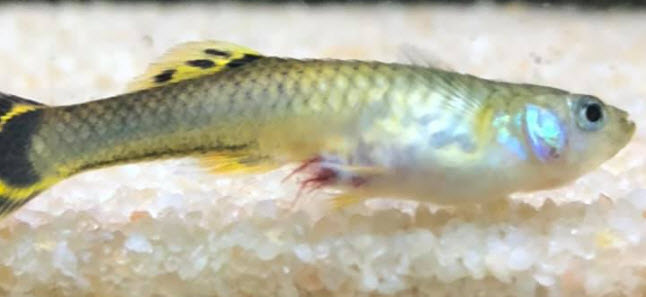
This lack of understanding of the way medications work is reflected in the often heard “But I treated for camallanus over and over again and it just keeps coming back!” These hobbyists are invariably putting the medication into the water column, not into the food.
Internal fish diseases such as camallanus can ONLY be truly treated in the food. Adding medication to the water is useless (but it makes a lot of money for suppliers!). Many believe (and the instructions on the dewormers say!) that fish medications need to be added to the water. They are simply incorrect. This controversial topic is covered in the following link:
12.5. Fish Don’t Drink
Return to Diseases Menu
.
Aquarium Science Website
The chapters shown below or on the right side in maroon lead to close to 400 articles on all aspects of keeping a freshwater aquarium. These articles have NO links to profit-making sites and are thus unbiased in their recommendations, unlike all the for-profit sites you will find with Google. Bookmark and browse!
.

Dave says
In reply to Cayden ….. You are doing everything correctly. Just give it time. Camallanus infections can take months to resolve themselves.
Cayden says
Hi Dave, I’ve been trying to use Levamisole to treat Camallanus. I’ve tried both in food and in water (the tank is quite small so I don’t have to use much of the medication; I’m probably dosing many times higher than needed). However, the Camallanus is not responding to either. After around a week of constant treatment, they are still hanging far out from the fish. I don’t know if they are moving, but it seems like they are either unaffected or stuck for some reason. I also don’t know if the fish is even eating any of the food, even though it has had no other source within the past week.
What can I do? Is it normal for the worms to stay hanging far out? By far out, I mean it looks like a majority of the worm’s body is outside the fish, compared at least to some that have fallen out. I spotted one separated worm early on in the treatment, but I have not spotted any others that have fallen off (if they are my fish is probably eating them).
Another thing too, the quarantine tank has a rough air stone. Sometimes, I notice the fish thrashing along the surface, probably to try getting off the worms. Should I be adding more rough surfaces to allow her to scrape and scratch off the worms?
Thanks in advance!
Kerstin says
Thank you so much! I love your website 🙂
Dave says
In reply to Kerstin ………. The article has the recipe for the food in it. I have successfully treated shrimp tanks and snail tanks with both levamisole and fenbendazole with no die-offs but I have run across folks in the literature who have had die-offs of snails and shrimp. Don’t use PP for treating anything in the aquarium. You do not need to vacuum to kill the worms. They naturally die outside the fish’s body.
Kerstin says
Hi Dave, Thank you for this article, it is very helpful! All my tropical tanks are infected with this and I’m wondering about my goldfish now too. I think it came from plants I ordered online and added to all the tanks. I have started treating the tanks with levamisole in the water and will start with the medicated food you suggest as soon as I can get it, but what is the recipe/dosing for adding levamisole to the medicated food as well, in case that is needed too? I have mystery snails and amano shrimp in a planted tank with the infected fish, can they (shrimp and snails) stay in the tank if treating it with medicated food with fenbendazole? Also, I read these are sensitive to potassium permanganate, can I treat the tank with PP instead of vacuuming a planted tank to kill the ones free in the tank? (and rather than tearing down the whole tank.) Thank you for your help!
Dave says
Pecking will get the levamisole into the fish. Levamisole is only slowly soluble.
Cayden says
Hello Dave,
Levamisole is special in that it can dissolve in water. Does that mean it can dissolve out of gel foods into the surrounding water? I ask this because I have fish which peck their food rather than swallow it whole. In this case, how can I make sure they are getting the medication and it is not dissolving out of the food into the water?
Thanks in advance.
Dave says
Treat the whole 55 gallon tank with all the fish in it. Once a week for three months. That should clear out the worms.
Archie says
Hi, Dave,
I just found out that this camallanus worm is the root cause that keeps killing my rams. 2 years ago I had 4 Bolivian rams, they died one by one in a matter of 2-3 months. This year I tried again and bought 8 Bolivian Rams in August in a 55 gallon with a bunch of rummy nose and neom tetras. The Rams still die one by one and I noticed that invariably each showed white poop, and not eating and will die weeks later with sunken belly. I dissected one dead ram and found 20ish red worms inside the guts, most are concentrated towards the anus.
Question 1) Should I take ALL my fish out of the 55 gallon to treat? I have a 10 gallon tank that I can use for this but really can’t fit all the fish. What is your suggestion?
Question 2) what to do with my current 55 gallon tank? It has 3″ gravel and lots of rocks and caves and plants. How to kill any remaining lavae in there?
Dave says
In reply to Jimmy …… Once every two weeks for three months.
Dave says
In reply to Jimmy ….. In theory UV should help but I’ve never seen any research confirming that hunch
Jimmy says
also, would using a UV Sterilizer help in getting rid of free swimming larvae?
Jimmy says
How long and how often do you feed the medicated food to the fish to treat caqmallaus?
Dave says
In reply to Tesi ……. just a tiny amount of medication, like the size of barley grain, crushed and mixed into two tablespoons of food.
Tesi says
Hello,
I would like to treat my fish as you suggest, I found medications for humans and dogs with febendazole, but how do I figure out the dose for fish?
Thanks!
Karine Crampon says
J’ai toujours des vers accroché au poisson malgré 15 jours de traitement NON STOP au fenbendazole dans la nourriture, j’ai même donné des miettes entière de médicament (panacur) et aucun effet ! Je suis désespéré ! Ces saloperies de vers ont du développer des résistances ! Je vais essayé le levamisole c’est mon dernier espoir, j’espère y arriver je suis désespérée….
Mountry says
Well after seeing camalanus again on January 13th I adjusted my medicated feeding schedule to 3 days in a row once a week with both levamisole and fenbendazole in the food along with a water treatment whith levamisole once every two weeks to paralyze any larva that end up on the bottom and might get eaten. There are currently no more worms showing but I think I’ll continue the treatment for another two weeks just to be sure.
Mountry says
I started treating with Levamisole in the food on November 16th and again two weeks later on the 30th and then on December 7th I started treating with praziquantel, and fenbendazole on alternate weeks and yesterday I noticed visible camallanus hanging out of a couple of the guppies.
I am planning on making my next batch of food with 1/16th tsp each of fenbendazole, and levamisole and using that weekly for the duration of the treatment but I am worried it still won’t be sufficient.
Dave says
Garrett …. Move the nerites out for the duration of the treatment. Sometimes snails are unaffected and sometimes they die. Better safe than sorry.
Garrett M says
Thanks to your answer to my question regarding fenbendazole, I think I am going to give Levamisole a try first (along with Praziquantel) because of my shrimp and snails. But one further clarification. On this page, you said “Levamisole is safe for everything except nematodes,” but on the Nematodes and Capillaria pages, the sentence in the equivalent section says, “Levamisole is safe for everything except nematodes and snails.” Is difference due to updated information? If I need to, I can move out my two nerites for the duration of treatment.
Dave says
In reply to Susan …. Switch over to Levamisole in the food. Fritz Expel p is levamisole.
Susan says
Hello Dave
I’ve been treating my tetra since Oct with the fenbdndazole every other week, I haven’t seen any changes, I can still see the worm like threads. Am I missing something? I’ve been giving the medicated food the fish is happy and eating I just don’t know what else to do. 🙁
Thanks Susan